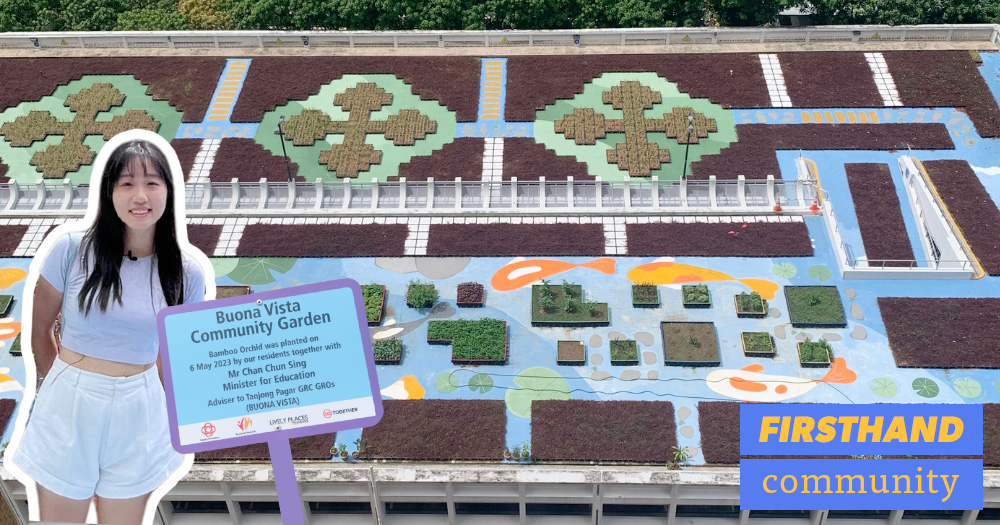Follow us on Telegram for the latest updates: https://t.me/mothershipsg
Firsthand: Community is a new series by Mothership, where we explore the spirit of community in Singapore through in-depth articles and videos.
From Tampines to Tuas, we’ll investigate the untold stories of the different neighbourhoods in Singapore — firsthand.

The mural on the converted top floor of the multi-storey carpark at Block 7B Commonwealth Avenue is best admired from a bird’s eye view.
From above, koi fish appear to converge in clear waters, and planters line up neatly in the shape of four-leaf clovers.
Alongside the eye-catching design are budding plants lovingly tended to by community gardeners.
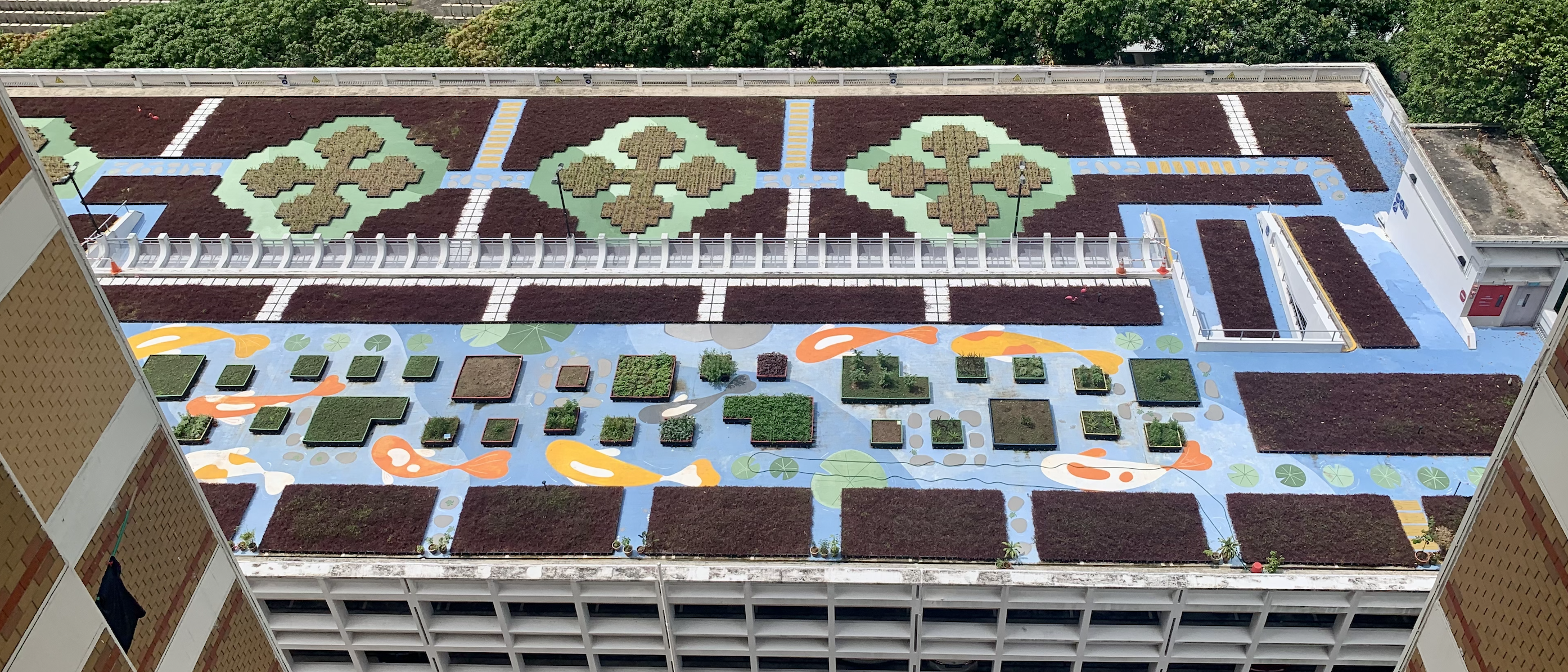 Image by Kelsy Koh
Image by Kelsy Koh
The colourful display is the work of local artist Jolyn Kang and around 60 community volunteers, from the very young (a three-year-old toddler) to the very old (in Kang's words, “grandmas”).
Since the Buona Vista Community Garden's launch in May 2023, residents have been able to appreciate the illustrated koi garden for themselves.
The mural was also certified by the Singapore Book of Records as Singapore’s largest rooftop art display.
This has become a point of pride for those residing in Buona Vista, said Kang.
Getting the gig
The 28-year-old freelance artist and streamer recounted that she was invited by a Buona Vista community volunteer to design a floor mural for the then-upcoming community garden.
The unsheltered top floor of the carpark was almost always vacant as few residents wanted their car to bake under the sun.
Rather than leave it empty, the local Residents’ Committee decided to convert the underutilised space into a buzzing homegrown community garden and communal space for residents’ activities.
Having previously completed a community mural in Jalan Kukoh, Kang was enlisted to take part in the project.
Despite not residing in Buona Vista herself, her past experiences moved her to accept the invitation.
"[Murals] make spaces more interesting for people, more than just a plain wall," she said.
"And I think with my other murals, people are always like, 'wow, this is so nice, so interesting'. They just appreciate that it's not plain."
Designed to help residents ‘think positively’
First, Kang collaborated with community volunteers to decide on the mural's theme and design.
Together, they discussed a simple design accessible to the young and old; avoiding styles that were too abstract, complex, or obscure.
"Something that people can understand what the art is about," she explained.
"If [the mural] is too abstract then no one can really understand."
They also wanted the mural to be large and attractive when viewed from nearby residential blocks.
All this eventually translated into an illustrated "koi garden", complete with larger-than-life lily pads and smatterings of green turtles, among other elements.
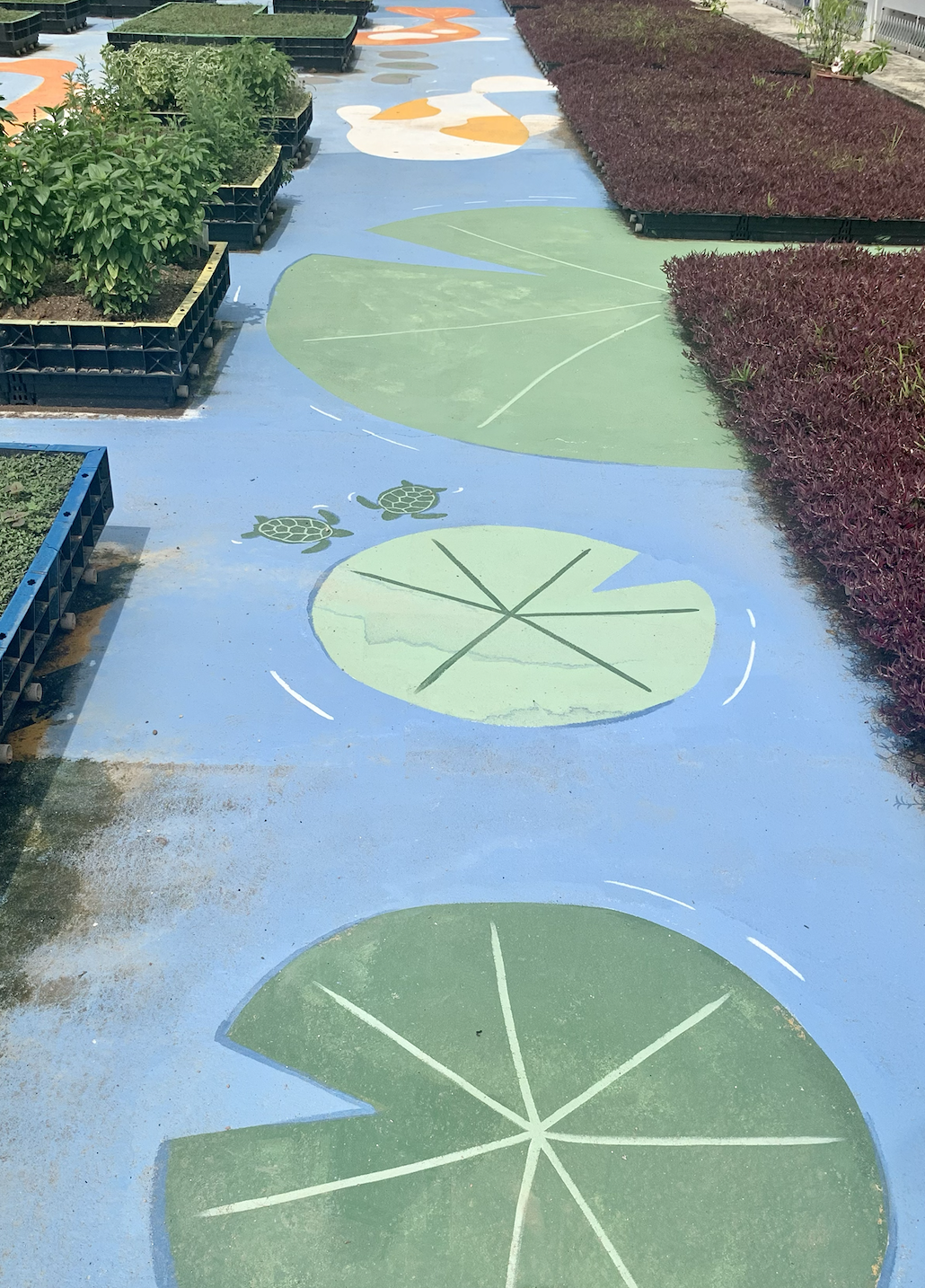 Photo by Kelsy Koh
Photo by Kelsy Koh
The vision, Kang said, was to allow residents to be transported to a serene koi garden, where they would be soothed by the mural and "feel more zen" after a long workday or while working from home.
This goal served as her inspiration for the calming design.
The mural occupied so much of my eyeline, I only noticed the row of headstones behind the carpark on second glance.
In retrospect, this could have motivated the development of the garden and mural, though Kang did not cite this as a reason.
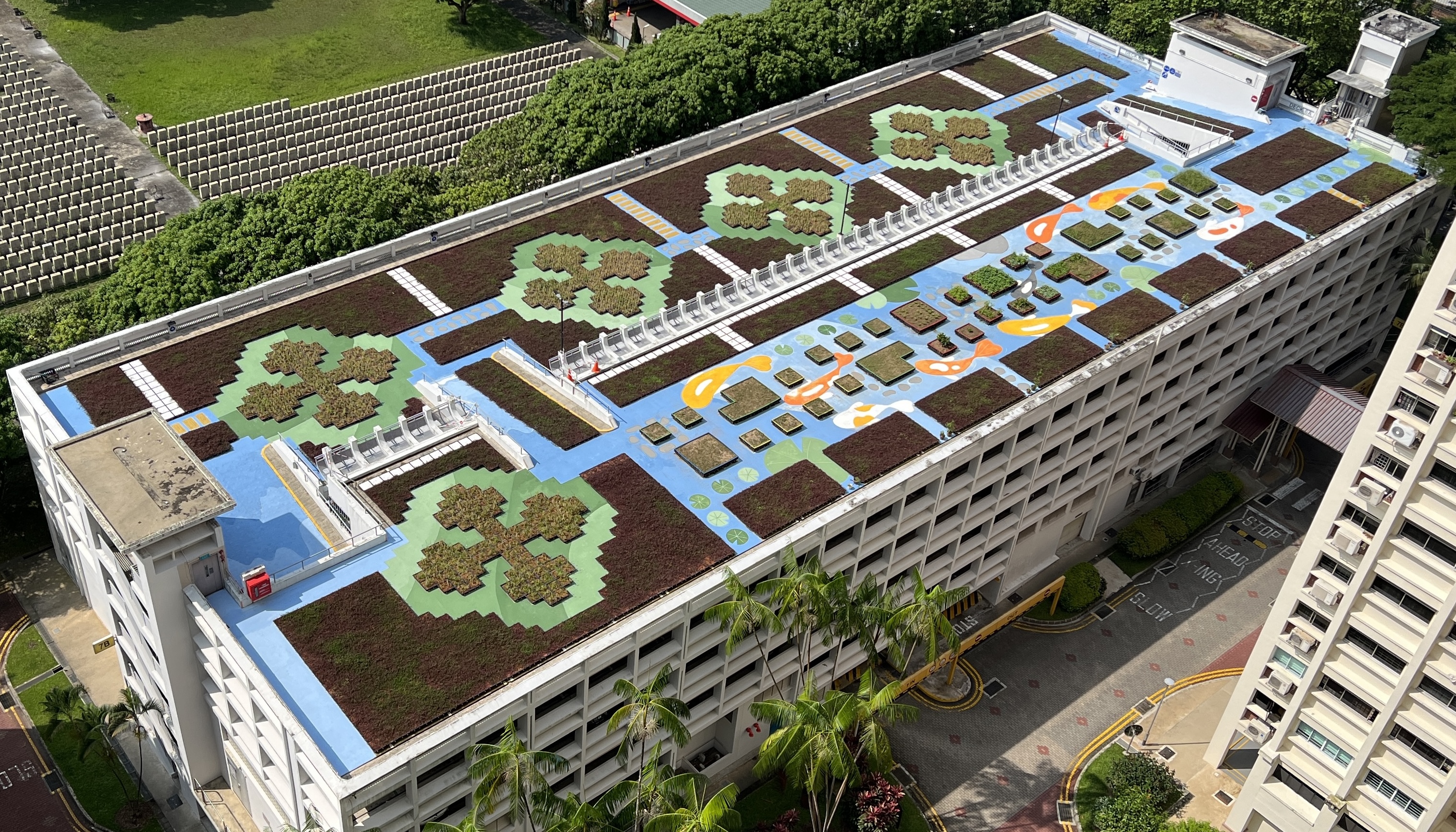 Photo courtesy of Jolyn Kang
Photo courtesy of Jolyn Kang
Touring the garden, it is clear that both its layout and the mural were well-considered and packed with symbolism.
The design cleverly incorporated the existing structure of the carpark — for example, "flowing" waterfalls replaced slopes which used to guide cars between floors.
At the same time, the waterfall and colours of the koi fish were intentionally chosen for their auspicious meanings.
Signs around the garden also explained the significance of these symbols — like four-leaf clovers — to visitors.
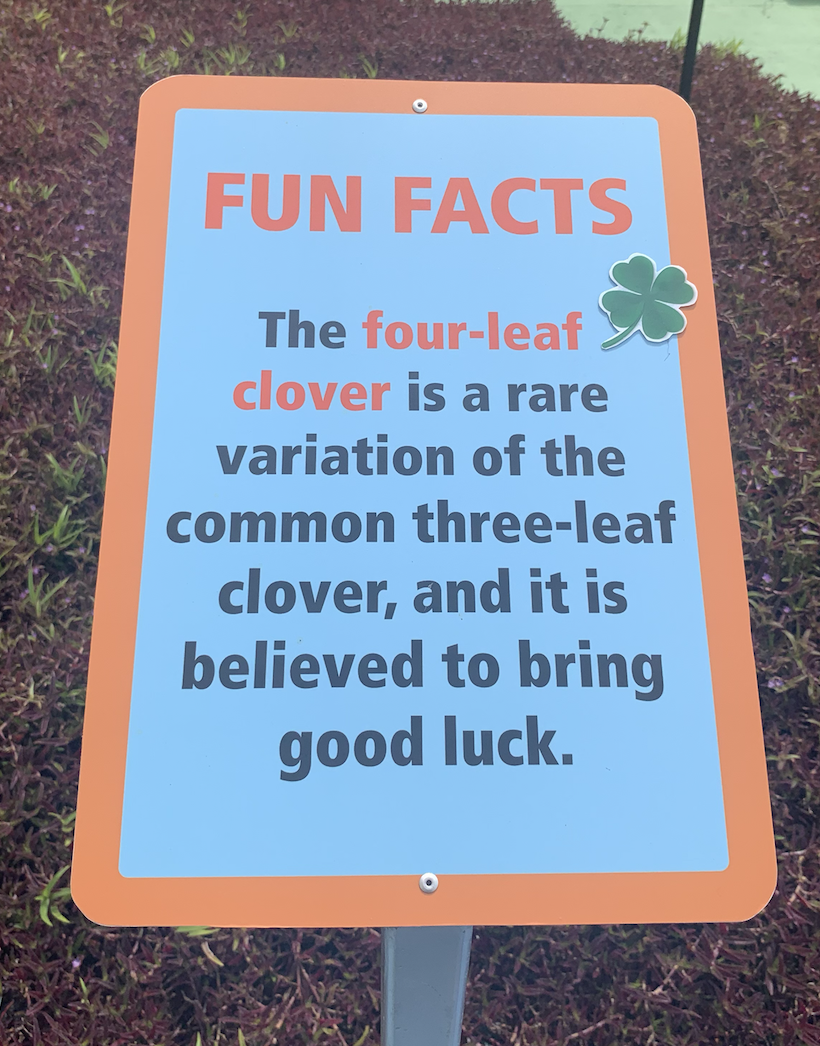 Image by Kelsy Koh
Image by Kelsy Koh
Kang also pointed out a singular dark-coloured koi fish among other orange ones.
"The dark koi actually symbolises removing your bad luck", she explained.
"That's why there's only one in a darker colour, while the rest are more colourful."
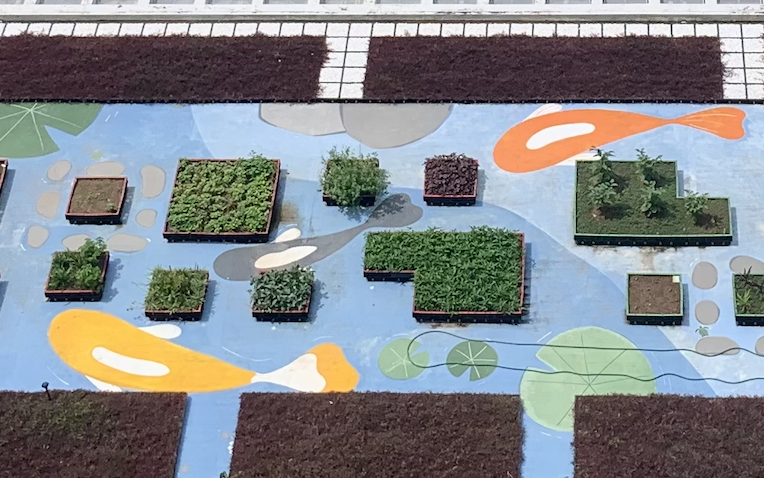 A close-up of the black koi fish among orange ones. Image by Kelsy Koh
A close-up of the black koi fish among orange ones. Image by Kelsy Koh
Walking around, I am somewhat tempted to skip on painted wooden planks lined up to mimic bridges, or to sit on lily pads close to the planters.
These features were thoughtfully and intentionally included to turn the static mural into an interactive, dynamic playground for all ages to enjoy, said Kang.
She added:
"[The residents] were quite focused on [incorporating] interactive elements like a hopscotch. Like maybe the children could pretend to jump from one stone to another."
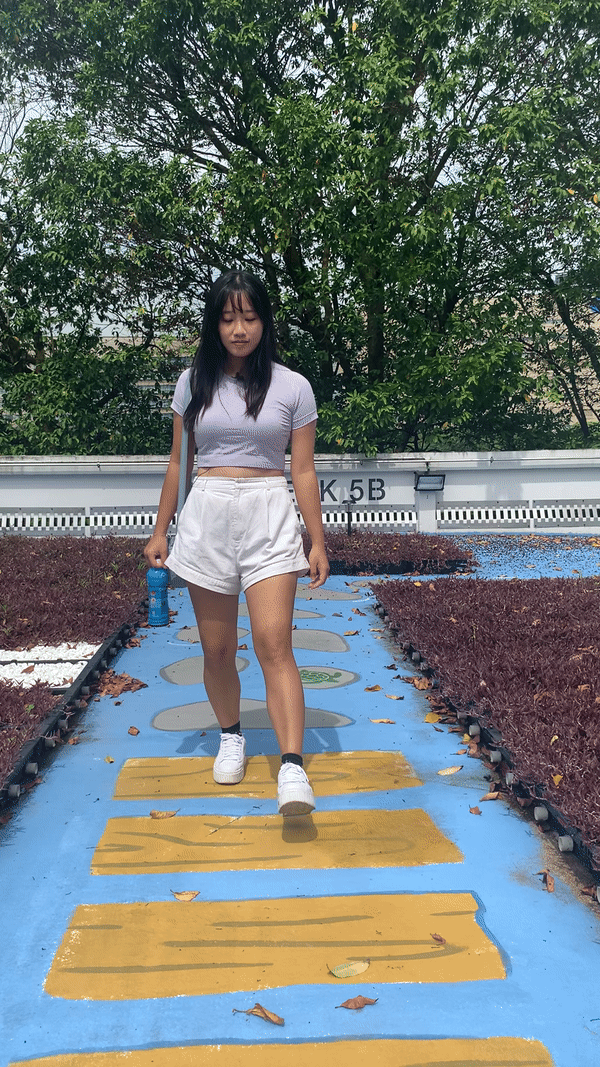 Gif by Kelsy Koh
Gif by Kelsy Koh
The process of painting
Showing us around, my experienced tour guide could name and explain the garden's features without pause.
This was evidence of the three months she spent studying every curve, slope, and detail to develop various iterations of the design.
But with the help of community volunteers, the mural itself was completed in just a month.
First, Kang painstakingly primed and sketched the design on the floor of the community garden.
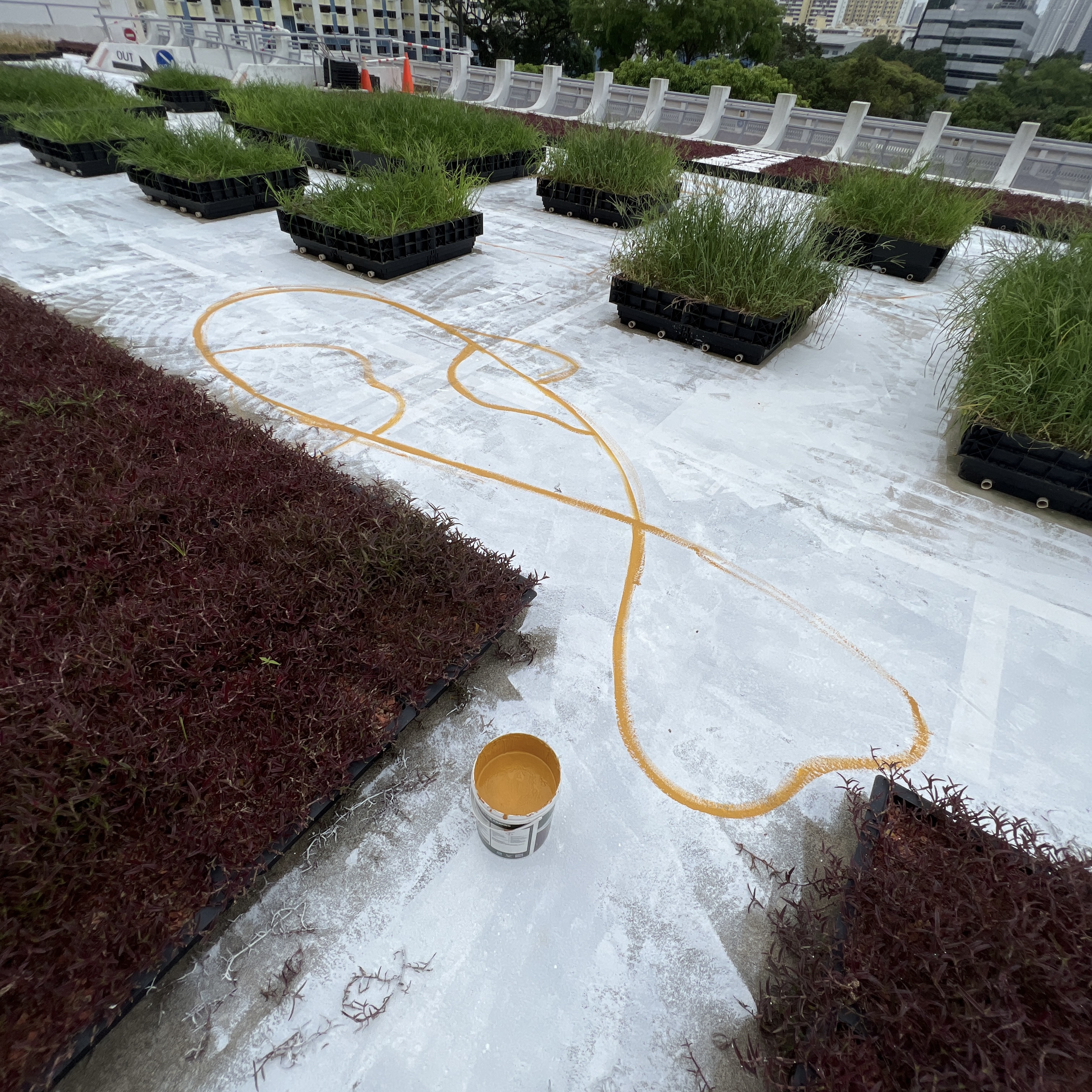 Photo courtesy of Jolyn Kang
Photo courtesy of Jolyn Kang
Then, over three weekends, 60 volunteers of all ages flocked down to contribute to the mural.
The volunteers were split into groups and assigned an element to paint, like the water or turtles. Some residents were also given stencils to place small crabs and clams where they liked.
"I created stencils for them to like, co-create," Kang explained.
"Initially, the plan was to have turtles on the rock or in the water. But in the end some were half-half, on the way to climb the rock or on the way to swim down.
So they all created stories in their mind of what [the turtles are doing]."
She added that the volunteers would tend to focus on the areas of the carpark that were visible from their homes.
"At first I told them, 'oh, now that you're done here, why don't you paint over there?'" she said.
"But they were like, 'no, I'll stay here.'"
I asked if Kang had ever been nervous about doing this alone — what if no one turned up?
"I was a bit uncertain, because the weather was quite hot," she admitted.
"And on a weekend, you know, they could just stay at home."
But she was pleasantly surprised and grateful when friendly faces with ready hands appeared at each session.
While I was at the garden, the heat was stifling, even after a bout of rain. I could only stand to tour the garden for less than 15 minutes before ducking into the shade.
It was admirable, then, to think of the long hours the volunteers and Kang had spent under the sweltering sun.
Some children also enjoyed painting so much, they enthusiastically requested more tasks.
Kang shared an anecdote of one of the youngest volunteers, a three-year-old who arrived with her mother:
"It was very cute. She was trying to use the roller brush, then her mother was like, 'make sure you don't do it wrongly otherwise everyone will have to repaint it!'" she laughed.
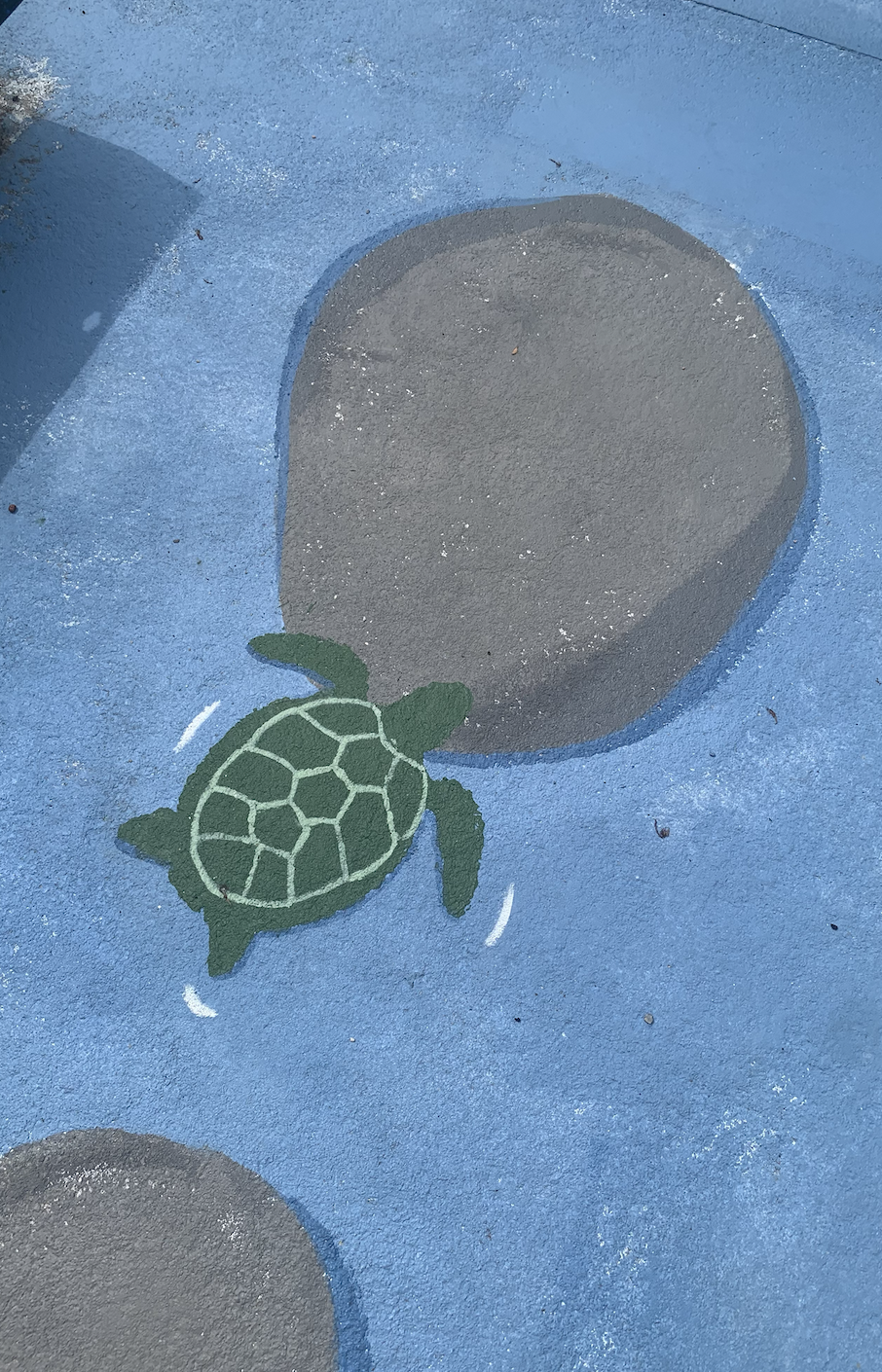 Photo by Kelsy Koh
Photo by Kelsy Koh
But the process of bringing the mural to life was complicated by other factors.
Firstly, unlike digital art — Kang's usual medium — the mural required long hours of drawing and painting under the sun.
This took a physical toll on her, causing body aches and fatigue.
"You just use a lot of muscles that you don’t normally use... but after a while, your body gets used to it and it just doesn’t ache anymore."
At some points, she also had moments of doubt, as her larger-than-usual canvas meant she could not easily picture the final product or pick up a digital pen to erase mistakes like she normally could.
"Initially I was more nervous," said Kang.
"What if it turns out weird, you know? There was a lot of uncertainty."
Additionally, she was not spared by unpredictable weather. The raging sun or pouring rain sometimes impeded or undid her progress when a downpour washed some of her efforts away.
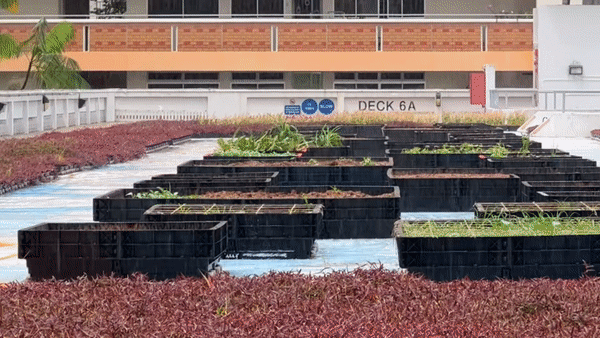 Rain washing away some parts of the mural. Video courtesy of Jolyn Kang
Rain washing away some parts of the mural. Video courtesy of Jolyn Kang
Despite the setbacks, Kang hopes to take on more opportunities to design and paint murals.
Perhaps her own estate, which she lamented for its lack of murals, will be her next conquest.
At the same time, she joked about her preference for a smaller canvas, since the rooftop mural was quite a herculean task.
"I hope I can do other murals, like maybe on a building or a different place.
But don't have to be so big. Can be smaller because [this mural] was quite hard."
Reception to the mural
On the day of the community garden's launch, throngs of curious residents were eager to get a glimpse of the transformed space.
The turnout, Kang said, was bigger than she anticipated.
There, residents approached her to express their thanks for her labour of love. They'd seen her toiling for long hours from the comfort of their homes — a happy surprise, as some of them had begun to doubt it it would ever coalesce.
"They knew that they were going to have a garden for quite a long time, but I think for them they needed a lot of approval before works could start," she added.
During the launch, Kang watched as a certificate from the Singapore Book of Records was presented to the Buona Vista Zone C Residents’ Committee and local Member of Parliament and Minister for Education, Chan Chun Sing.
When I asked if she felt a sense of pride then, she answered affirmatively:
"I think it's quite good that people can understand what the art is about. [The mural] is quite simple so even children can identify what the drawings are."
"And I think for the residents themselves, they also are quite happy about it. It's like, 'wah, my estate got something', you know."
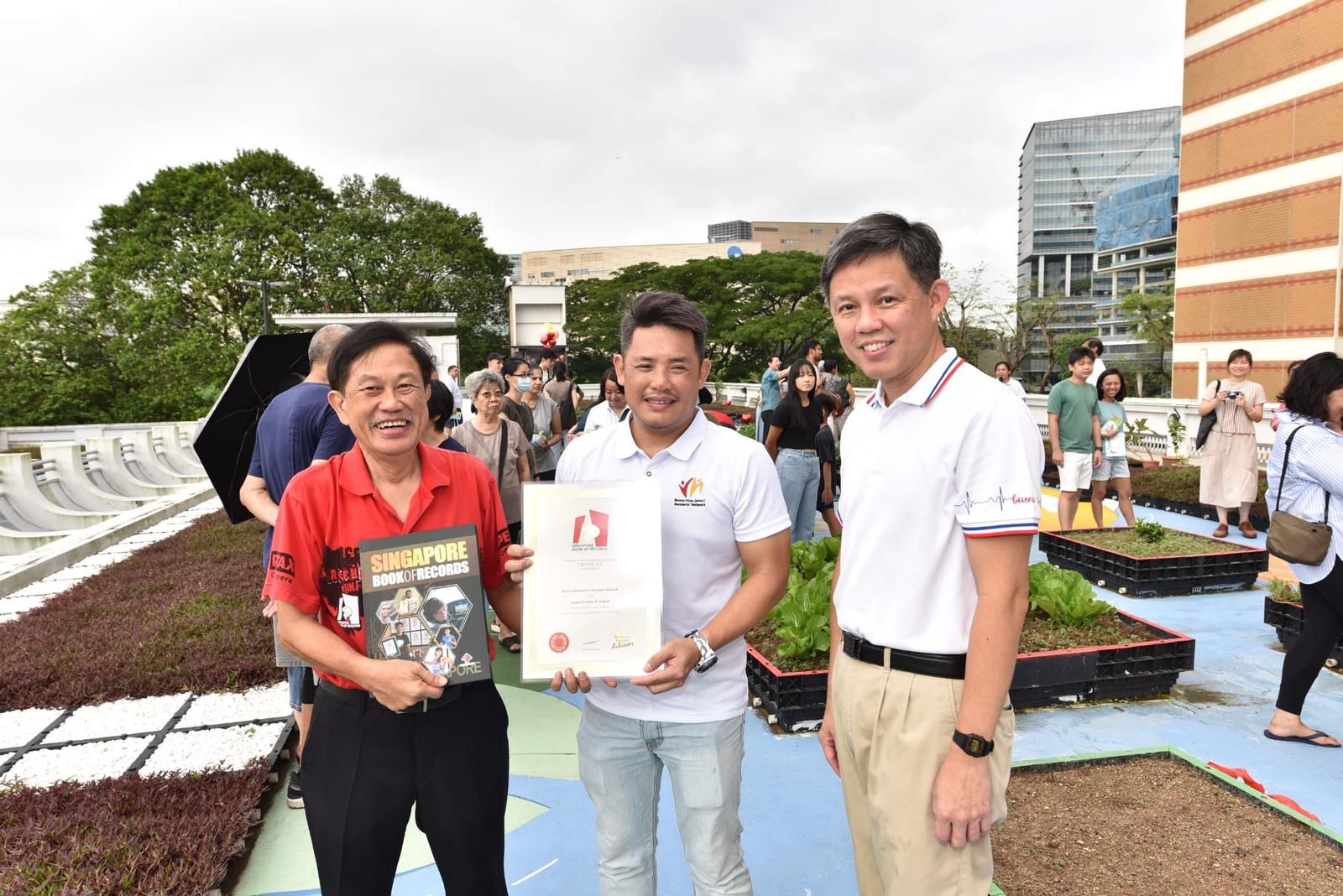 Photo courtesy of Jolyn Kang
Photo courtesy of Jolyn Kang
Looking back on the process
The community garden is now home to plants like pandan and brinjal, all closely monitored by volunteer gardeners. It has also hosted programmes by NParks to teach the Buona Vista residents about gardening.
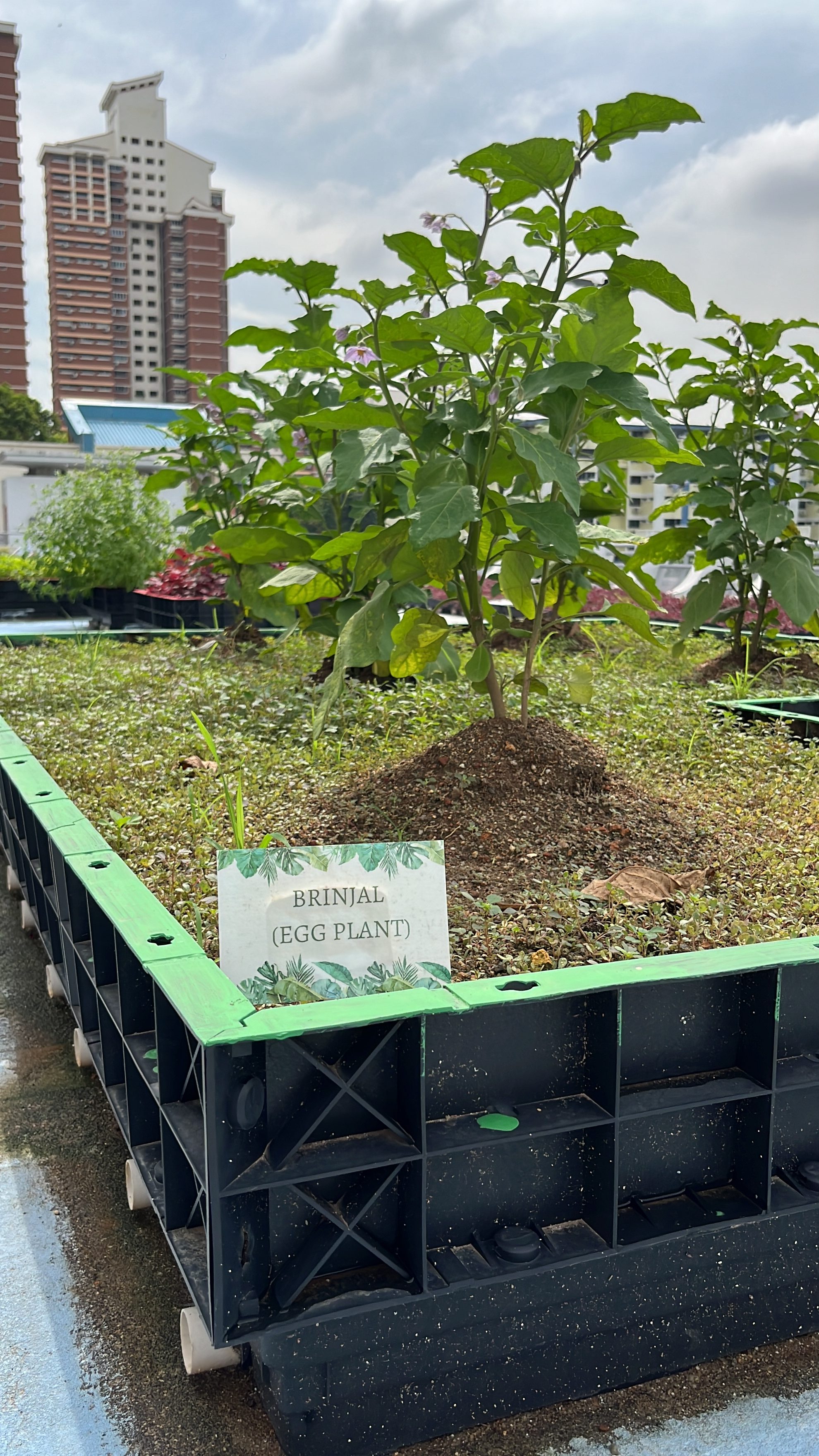 Brinjal plant at the community garden. Image by Alfie Kwa
Brinjal plant at the community garden. Image by Alfie Kwa
In hindsight, working with the volunteers was probably the most enjoyable part of the painting process, Kang recalled fondly.
She added that the mostly straightforward work of colouring in the lines gave residents the chance to chat and interact with one another.
"I think they wanted community painting [sessions] also because neighbours who stay in the same block may not even talk to each other.
So this was a good way for them to interact — they could go around [while painting] and they were chatting with each other."
Personally, I'm not sure if many people would be willing to get their hands dirty and work under the sun to carve out a leisurely, educational, or simply communal space for their community.
Some may not even find value in adding colour or art to their estates.
But it seems the residents of Buona Vista see potential in their neighbourhood, and will persist until they have personally asserted their presence and created something they can be proud of.
The entry in the Singapore Book of Records, then, is just tangible, well-deserved proof of the residents’ commitment to make their estate something more.
Although I may never fully understand why the residents were so passionate about this project, perhaps we would all be better off if we were equally insistent on leaving our mark in the places we live.
The Buona Vista Community Garden is located at Level 6, 7B Commonwealth Avenue. It is open 6:30pm to 8:30pm daily.
Have something even more interesting going on in your neighbourhood? One-up us at [email protected].
Firsthand is a new content pillar by Mothership, featuring in-depth stories about people and their issues.

Top photo by Kelsy Koh and Alfie Kwa
If you like what you read, follow us on Facebook, Instagram, Twitter and Telegram to get the latest updates.

